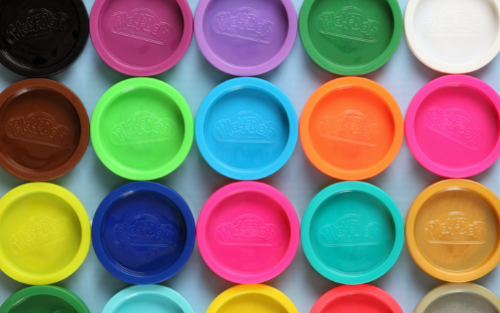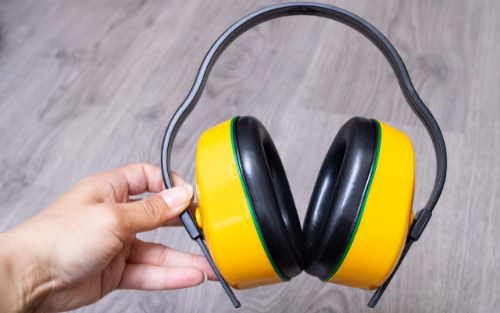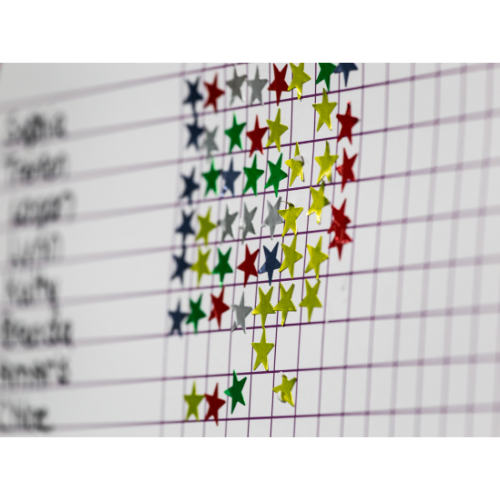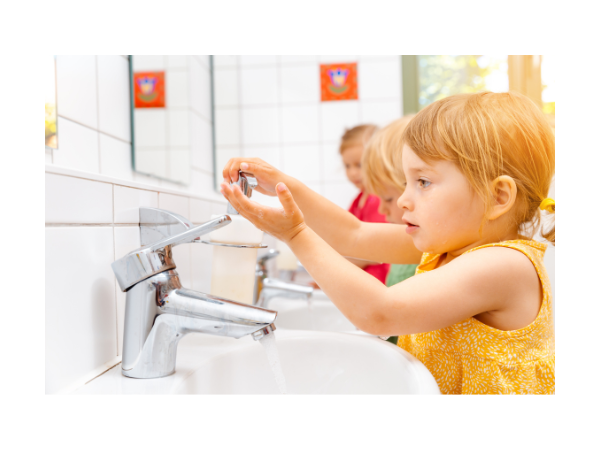Our sensory system is made up of the 5 senses (hearing, taste, smell, sight, touch). Our sensory system works daily to help our bodies regulate (soothe and calm itself). All children and adults use sensory strategies throughout the day.
We might not even notice some of the sensory strategies that we could use during the day because they have become so habitual. These strategies could look like covering your ears if something is too loud, turning down the radio so you can concentrate when you are driving, or pinching your nose if something is too stinky.

Children with disabilities often need support in using sensory strategies to help their bodies and brains feel regulated. Staying regulated can help with thinking, processing, making good decisions, and completing work.
You may have noticed that your child needs to chew on something when they are upset or thinking, maybe they need to take a walk to calm down, or maybe they sit on a wobble stool or yoga ball when they are doing their work. Some of the students I work with will hand flap or toe walk to help their bodies feel regulated.
Over the years, I have learned about many different items that support students’ sensory needs, and I can’t wait to share them with you!
When considering sensory items to use….
As a caveat, your child’s team may prefer that you offer your child something other than what is on this list. This list is definitely not exhaustive, and not any one thing may be effective for all children. I tell the students that I work with that these sensory items are tools, not toys, and if they become toys, then they are not effective sensory items for them.

Safety is most important
When choosing sensory items, safety is number one. If your child will swallow items or chew through items, make sure that they are monitored while they are using these. Or, if your child loves to throw items, make sure that the items that you offer are lightweight, or you are in a place that is safe to throw items.
Teaching how to use the sensory items
There are many ways to teach about how to use sensory items. For some children, a verbal conversation about the item and how it is used may be the best way to explain how to use the item.
Other children may benefit from a social story (I have linked a bunch of ideas here… I love social stories!!!) or visuals describing how to use the item. Other children may use their AAC or PECS books to learn more about the sensory items.
Choosing sensory items
For children who need to wiggle, wobble and move during school work
I LOVE wobble stools. These can be SUCH a game changer for students who need to move to stay focused. Many of my students who have Attention Deficit/ Hyperactivity Disorder (AD/HD), autism, or learning disabilities benefit from using these stools.
Other students I work with LOVE using these yoga balls.
We have used these yoga balls in many different ways.
Some students will sit safely enough on just the yoga ball, and they do not need any additional supports.
For other students, we have looped a pool noodle, and sat the yoga ball in the middle of the loop to keep it corralled.
Other students benefit from having back support, and use these yoga ball chairs.
These kick bands can be awesome for kids who need to push or kick their feet to regulate. These can be kind of noisy if they are kicked too hard.
For students who need to chew
Many of my students use chewy necklaces or chew items. One of my favorite Occupational Therapists recommended the ARK brand for it’s durability and reputation, so they are all I buy now 🙂
I love that ARK has so many different styles and types. There are some stylish necklace styles, or hand held chew items. There are also varying “toughness” levels, depending on how hard a child like to bite. ARK typically recommends starting with the softest “toughness” level first, but you know your child best.
If your child needs to fidget
Playdoh or putty is a great idea to keep hands busy. These items can be used during transitions throughout the day as well, especially if your child needs to keep their hands doing something productive. I usually buy the little pots of playdoh so that if it dries out, it is not a big package that is wasted.

Velcro, with either a soft side or the rougher side, can be put on a students desk to run their fingers over. I like to give students the choice, and get their buy in on what side works best for them. Velco is a great solution if you want a discreet fidget, but still need something to use in the classroom.
Many students like if I put the velcro underneath their table or desk so that using it is not obvious to peers.
For children with noise sensitivities
Noise canceling headphones have been so helpful for many of the students I work with! They can be great for softening classroom sounds that can be distracting so that students can focus on tests or during independent work.
Noise canceling headphones can also be a huge relief for children to use in noisy environments like fire drills, assemblies, or field trips.

A great low tech option for noise sensitivities is to teach students to cover their ears with their hands if they are physically able to do so.
For children seeking pressure during the day
Have you ever just had that feeling like you could really use a big hug? And when you get one you feel wonderful? For some children, pressure can help them feel amazing and calmer.
Weighted blankets or lap pads can be a great solution to getting these pressure needs met.
Lap pads or weighted blankets can help students stay focused during circle time or independent work time. For younger children, they may prefer a cute animal lap pad. Some of the lap pads have fidget items built into them as an option.

It’s important to consider that not all items will work for every child, and it may take some trial and error to figure out what does work best.
I’d love to hear from you about what works for your child!
Full Disclosure: Some of the links above are affiliate links. This means that, at zero cost to you, I will earn an affiliate commission if you click through the link and finalize a purchase. I am only linking items I ACTUALLY use and recommend.






